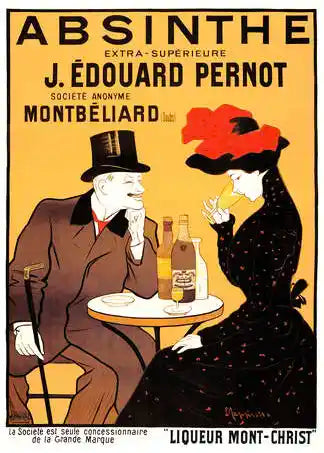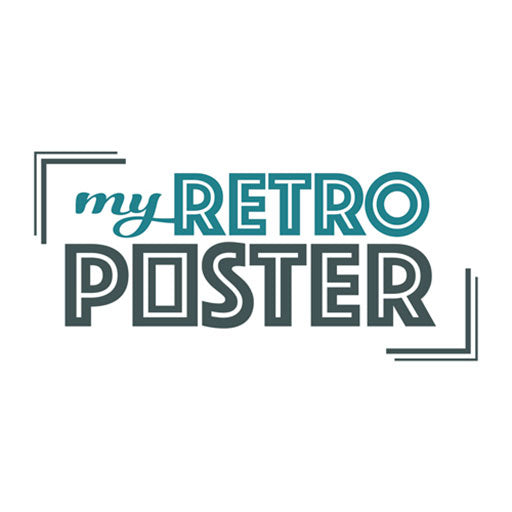The Art of the Text: From Advertising to Iconic 'Affiches'
In the realm of visual arts, the transition from simple promotional material to esteemed works of art is a journey marked by evolution, creativity, and a deepening appreciation for the synergy between imagery and text.

This narrative is particularly vivid in the history of the 'affiche', a term that, while synonymous with 'poster' in English, carries with it a richer, more artistic connotation in French. The distinction between 'poster' and 'affiche' isn't merely semantic; it encapsulates a shift from utilitarian advertising to a celebrated art form, as epitomized by luminaries like Alphonse Mucha and Henri de Toulouse-Lautrec, and the world of cinema.
The Genesis of the 'Affiche'
The genesis of the 'affiche' is deeply intertwined with the rise of modern commerce and the burgeoning consumer culture of the late 19th century. Indeed, the first grand department stores were among the pioneers in harnessing the power of the 'affiche' to captivate and allure the burgeoning middle class. These establishments, such as Le Bon Marché in Paris, founded in 1838, and Macy's in New York, established in 1858, quickly recognized the potential of visually striking posters to draw in customers and promote their novel concept of retail.
The 'affiche' became an essential tool in announcing sales, special exhibitions, and the arrival of new products, transforming the urban landscape into a vibrant tableau of commercial art. For instance, Le Bon Marché utilized 'affiches' to advertise their annual sales and special holiday events, employing artists to create eye-catching designs that were both informative and aesthetically pleasing.
Beyond the grand stores, specific products also played a significant role in the evolution of the 'affiche'. Notably, the burgeoning entertainment industry saw the potential of 'affiches' to promote their venues and stars. The Moulin Rouge, with its iconic 'affiches' created by Henri de Toulouse-Lautrec, showcased the allure of its performers, turning them into household names. Similarly, the advent of the cinema led to the creation of movie posters, which became collectible items in their own right.
Another early adopter of the 'affiche' was the transportation sector, particularly rail companies and ocean liner services. They commissioned artists to produce visually stunning posters that not only advertised routes and services but also evoked the romance and adventure of travel. These 'affiches' played a pivotal role in popularizing tourism and making exotic destinations accessible to the imagination of the general public.

Absinthe, the enigmatic and then-popular spirit, provides a compelling case study of a product marketed through 'affiches'. The spirit, associated with the bohemian lifestyle of Paris, was advertised through posters that became iconic for their vivid imagery and evocative allure, contributing to the drink's mystique and popularity.
The early 'affiches' for such products and services were not mere advertisements but works of art that reflected the spirit of an era increasingly fascinated by the possibilities of mass communication and the democratization of consumption. They heralded a new age where art and commerce intersected, creating a visual culture that continues to resonate in today's advertising and design.
Artistic Revolution: The 'Affichistes'

The turn of the century brought with it a wave of artists who would redefine the 'affiche', elevating it from commercial advertisement to art. Alphonse Mucha, a Czech painter living in Paris, became one of the most influential figures in this transformation. His 'affiches' for theater productions and consumer products were not merely advertisements but works of art, characterized by their distinctive Art Nouveau style, intricate patterns, and the harmonious integration of text and image.
Similarly, Henri de Toulouse-Lautrec's posters for the Moulin Rouge and other Parisian nightspots captured the vibrant energy of the Belle Époque. Lautrec's work demonstrated how the 'affiche' could convey the spirit of an era, blending portraiture, caricature, and typography to stunning effect.
Cinema and the 'Affiche'
The advent of cinema gave a new dimension to the 'affiche'. Film posters became a crucial marketing tool, but beyond their promotional role, they emerged as a genre of art in their own right. Iconic 'affiches' for films like "Casablanca" or "Metropolis" transcended their advertising function to become cultural artifacts, cherished for their design as much as for the movies they represented.
Political 'Affiches': The Power of the Slogan
Equally impactful in the evolution of the 'affiche' are political posters. With their bold slogans and compelling visuals, these 'affiches' have been pivotal in shaping public opinion and mobilizing movements. From the revolutionary graphics of the Soviet Union to the iconic "HOPE" poster of Barack Obama's 2008 campaign, political 'affiches' demonstrate the potent combination of art and rhetoric. These works not only aim to inform but to inspire, proving that a well-crafted slogan can resonate as deeply as the image it accompanies.
'Poster' vs. 'Affiche': A Cultural Divergence
While the 'affiche' was gaining artistic stature in Europe, the 'poster' in English-speaking countries was carving out a different niche. The explosion of youth culture in the mid-20th century saw posters become a staple of teenage bedrooms, with magazines offering pin-ups of the latest music and movie stars. This era solidified the 'poster' as a symbol of fandom and pop culture, distinct from the 'affiche's' artistic and commercial origins.
The Philosophy of Alecse and Myretroposter.com
At Myretroposter.com, Alecse champions the belief that text plays a pivotal role in the essence of an 'affiche'. For him, the addition of a title or slogan breathes life into the artwork, transforming it from a simple image into a narrative that communicates with the audience. This perspective is rooted in a profound respect for the 'affiche' tradition—an art form that intricately weaves together visual elements with text to produce a piece that is more meaningful and impactful than its individual parts.
Alecse's approach is one of reverence for the artistic legacy of the 'affiche', yet it is also forward-looking, embracing the desires of our clientele for personalization.
Recognizing the varied tastes and preferences of our audience, Alecse supports the customization of 'affiches', including modifications to the titles or their complete removal. This service, which can be accessed via a dedicated link (to be added), allows clients to inquire whether a particular 'affiche' can be personalized, offering an additional layer of engagement with the artwork.
However, it's noteworthy to mention Alecse's firm standpoint: an 'affiche' without text risks veering away from its identity, bordering on impersonating a painting—a medium it fundamentally is not. In his eyes, when an 'affiche' mimics a painting, it becomes akin to a mass-produced copy, diminishing its value to that of mere paper.
This philosophy underlines a crucial aspect of Alecse's creative process. The titles are not merely added as an afterthought; they are a balanced component of the image, integral to its composition. Alecse designs his 'affiches' with the anticipation of incorporating two titles, one at the top and one at the bottom. Without these textual elements, the framing of his images would likely be different, illustrating the symbiotic relationship between text and image in his work.
Moving Forward: The Legacy and Future of 'Affiches'
As we navigate the future, Myretroposter.com is steadfast in its commitment to honor the rich heritage of the 'affiche', drawing inspiration from historical precedents while paving new avenues in art and design. Our 'affiches' stand as a homage to the visionaries who recognized the potential of posters to transcend advertising, becoming portals to the world's narrative soul.
In crafting our 'affiches', we continue to delve into the dynamic interplay between image and text, bridging history with innovation. Guided by Alecse's vision, we are reminded that an 'affiche' is more than just an art piece; it is a conveyance of a message, a story, and a slice of history we hold. Through this lens, we invite our audience to explore the depth and breadth of 'affiches', celebrating their ability to narrate, captivate, and inspire across generations.











